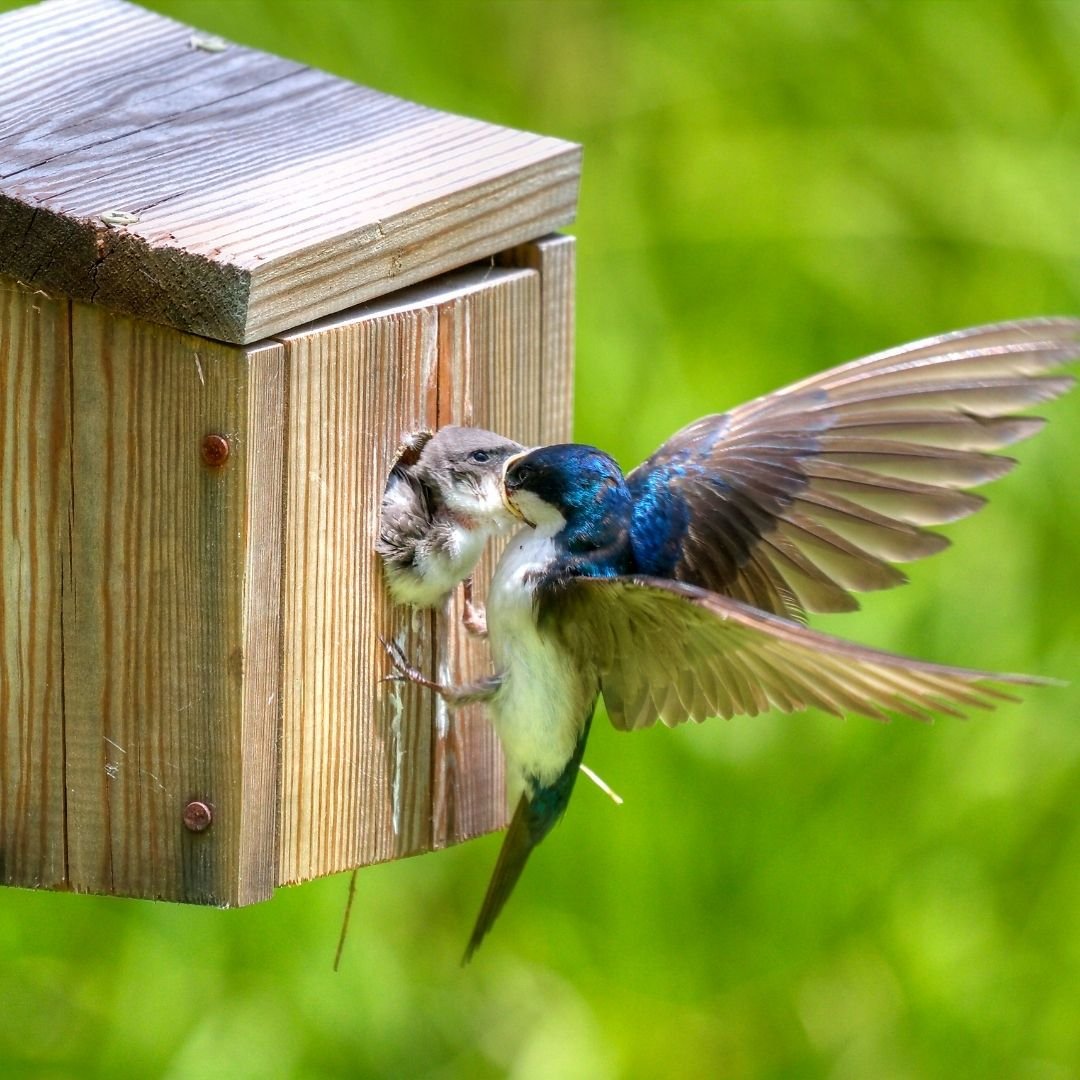Wild Child: Tree Swallows
This week we noticed a pair of blue backed, white bellied birds flitting around a dying tree near Westminster Ponds. We spotted tree swallows!
These birds are acrobatic fliers and easily catch insects in the air. They typically nest in hollows in dead trees or old Sapsucker holes in living trees, but they also nest in bird boxes so you may see them in a back yard.
Tree swallows mostly eat insects, but will also eat berries and plants. This lets them return to breeding grounds earlier than other birds because they can survive colder periods when it is hard to find insects for food.
Size/Shape
Tree Swallows are small birds. They have short, square or slightly notched tails and long pointed wings. Their bills a flat and short.
Colour
Male tree swallows have a brighter colour than females. Tree Swallows have a blue upper with a white lower and grayish flight feathers. They also have a black eye band. Young tree swallows have a brownish colouring.
Behaviour
These birds fly in complicated patterns and catch insects in flight.
Habitat
Tree Swallows nest in hallows. They will use nesting boxes, dead tree hollows, or old Sapsucker holes in living trees. They are often found near ponds and lakes and marshes, but also around farmland.
More information
Learn more about the Tree Swallow here and listen to the Tree Swallow’s watery perch call here.
Written by Tandy Morton, Wild Child Outdoor Playgroup Facilitator



